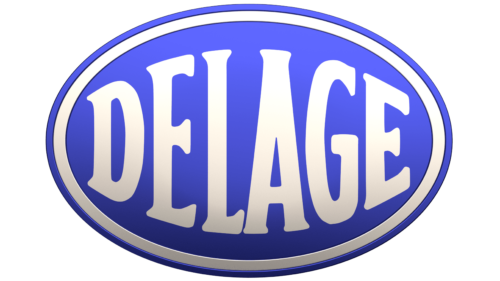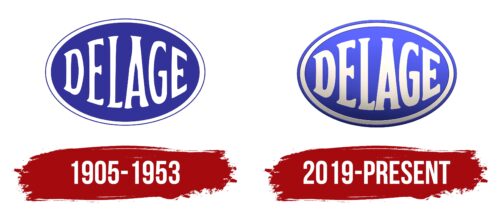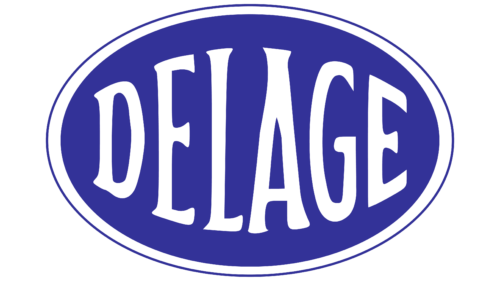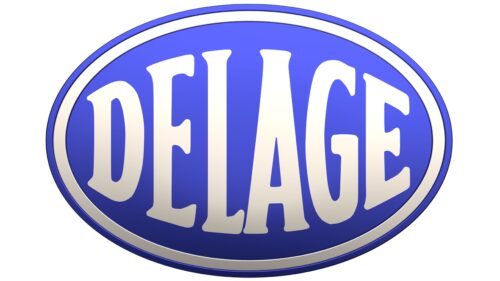The Delage logo is dedicated to ergonomics and functionality. The brand’s cars are excellent from any perspective. Original design solutions blend with quality components. The emblem reflects the pursuit of perfection, the constant search for new technologies, and an endless love for automobiles.
Delage: Brand overview
Delage, a luxury automobile brand from France, was founded in 1905. It is the brainchild of founder Louis Delage. Based in Levallois-Perret, France, Delage made a name for itself by creating high-end sports and touring cars designed for affluent buyers.
Since its founding, Delage’s reputation has been bolstered by its achievements on the racetrack: It won the Indy 500 race in 1913 and was crowned Grand Prix champion on several occasions in the 1920s. These victories demonstrated the brand’s engineering prowess and attention to detail, evident in outstanding models such as the 2LR and D8. The appeal of the Delage reached its zenith among the social elite, becoming a symbol of luxury and sophistication.
However, the onset of the Great Depression affected the company. Sales plummeted, and by 1935, Delage was in the hands of another French automaker, Delahaye. Under new ownership, Delage continued to produce cars, but the magic that had once defined the brand began to wane. By 1953, after nearly half a century of automobile production, the Delage brand was discontinued.
The Delage story took an unexpected turn in 2019 when efforts were made to revitalize the brand, focusing on modern electric sports cars. The goal was to combine modern technology with the aesthetics and spirit that once made Delage a sought-after name in luxury cars. Although production remains extremely exclusive, the revival of interest in Delage has cemented its status as one of France’s best-known pre-war luxury car manufacturers.
Today, Delage is an enduring symbol of French automotive elegance. Its contributions to racing and its mastery of design and engineering continue to be relevant, reflecting the passion and vision of the brand’s founder, Louis Delage. The brand’s rich heritage, embodied in its magnificent cars, remains a celebrated chapter in the annals of automotive history.
Meaning and History
What is Delage?
It is a French automaker known for its racing cars. Founded by Louis Delage, the company gained a reputation for quality products, elegant design, and engineering excellence. The cars were popular with the wealthy and often featured advanced technology and powerful engines. The marque achieved considerable success in motorsport, winning many races and establishing itself as a leading name in early 20th-century racing. Despite its success, the company ran into financial difficulties and ceased production.
1905 – 1953
The Delage company logo, used from 1905 to 1953, featured a blue oval with white lettering inside. The letters varied in size to match the oval’s shape, expanding toward the center to symbolize the company’s pursuit of new heights and narrowing at the ends to complete the composition with a sense of unity. This design emphasized the brand’s integrity and harmony.
The white outline of the logo highlighted the innovation Delage brought to the automotive world with its models. The blue color, reminiscent of a sapphire’s glow, emphasized the luxury segment of the company’s cars. This color symbolized the elegance and high status of Delage vehicles, making them desirable for wealthy car enthusiasts.
2019 – today
The logo cleverly uses a magnifying glass effect to make the company name stand out. The letters increase in size toward the center and decrease toward the edges, creating a dynamic visual impact. The text is set in smooth capital letters, giving it a clean and professional look. The small highlights at the ends of the letters resemble serifs, adding a touch of elegance.
The text is enclosed within a horizontal oval featuring a double contour. The primary colors are blue and white, creating a fresh and inviting appearance. The balanced gradient, light highlights, and skillful shading give the logo a three-dimensional effect, making it look voluminous and engaging.
The design is visually appealing, with the large central letters drawing immediate attention. The smaller letters at the edges create a sense of depth and scale. The blue and white colors evoke a clear sky on a sunny day, enhancing the logo’s inviting feel. The play of light and shadow makes the logo appear almost tangible, inviting interaction. Its visually stimulating design offers a mini adventure for the eyes without being overly complex.






